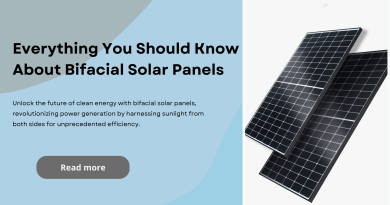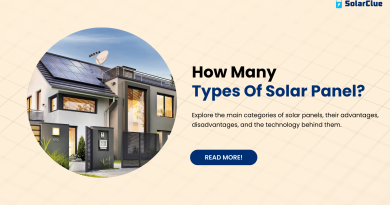how to use solar panel directly without battery
Using solar panels without a battery involves harnessing solar energy directly from the panels to power appliances and devices. While this approach can be cost-effective and efficient for specific applications, it comes with limitations and challenges. This guide explores the concept of direct solar power usage, the role of charge controllers and inverters, and suitable applications for battery-less solar systems.
Table of Contents
- 1 The Concept of Direct Solar Power Usage
- 2 Limitations and Challenges of Battery-Less Solar Systems
- 3 The Role of Charge Controllers and Inverters
- 4 Suitable Applications for Direct Solar Power
- 5 Safety Considerations and Precautions
- 6 Comparing Direct Solar Power to Battery-Based Systems
- 7 The Future of Direct Solar Power Technology
- 8 Case Studies of Successful Direct Solar Power Applications
- 9 FAQs
- 10 Conclusion
The Concept of Direct Solar Power Usage
Direct Solar Power Usage: In a battery-less solar system, solar panels convert sunlight directly into electricity, which is then used immediately to power connected devices or appliances. This setup eliminates the need for energy storage, making it simpler and more cost-effective for certain applications.
How It Works:
- Solar panels generate DC (Direct Current) electricity when exposed to sunlight.
- The generated DC power can be used directly to power DC appliances or converted to AC (Alternating Current) using an inverter for AC appliances.
Limitations and Challenges of Battery-Less Solar Systems
While using solar panels without a battery has its benefits, it also presents several challenges:
- Inconsistent Power Supply:
- Solar power generation depends on sunlight, which varies throughout the day and is influenced by weather conditions. Without a battery, there is no backup power, leading to fluctuations in power supply.
- Limited Usage During Low Sunlight:
- During cloudy days, early mornings, late evenings, or winter months, the power output of solar panels decreases significantly, limiting the system’s effectiveness.
- No Energy Storage:
- Without a battery, excess energy generated during peak sunlight hours is not stored for later use. This can result in wasted energy if the power generated exceeds the immediate consumption needs.
- Power Fluctuations:
- Direct solar power systems may experience voltage and current fluctuations due to changing sunlight intensity, which can affect the performance and lifespan of connected devices.
The Role of Charge Controllers and Inverters
- Charge Controllers:
- Although not always required in battery-less systems, charge controllers can regulate the voltage and current from solar panels to ensure they remain within safe limits for the connected devices. This is particularly useful for protecting sensitive electronics from power surges or fluctuations.
- Inverters:
- Inverters are essential for converting DC power generated by solar panels into AC power, which is used by most household appliances. In battery-less systems, grid-tie inverters can synchronize with the grid and feed excess solar power back into the grid if allowed by local regulations.
Example of a Simple Setup:
- Solar Panels → Inverter → Appliances
Suitable Applications for Direct Solar Power
Direct solar power systems are ideal for specific applications where consistent sunlight is available and energy storage is not necessary:
- Powering Small Appliances:
- Solar panels can be used to power small DC appliances such as fans, lights, and water pumps during the day.
- Charging Devices:
- Solar panels can be directly connected to charge devices like mobile phones, tablets, and power banks using appropriate charge controllers or voltage regulators.
- Water Pumping Systems:
- Solar-powered water pumps are commonly used in agriculture to irrigate fields during sunny days.
- Solar-Powered Ventilation:
- Ventilation fans in greenhouses or attics can be powered directly by solar panels during the hottest parts of the day when cooling is needed most.
Safety Considerations and Precautions
- Proper Wiring:
- Ensure that all wiring is correctly rated for the current and voltage produced by the solar panels to prevent overheating or fire hazards.
- Grounding:
- Properly ground the solar panel system to reduce the risk of electric shock and protect against lightning strikes.
- Use of Surge Protectors:
- Installing surge protectors can safeguard connected devices from voltage spikes due to power fluctuations.
- Avoid Overloading:
- Do not connect more devices than the solar panel system can safely handle to avoid overloading and damaging the system.
Comparing Direct Solar Power to Battery-Based Systems
| Aspect | Direct Solar Power | Battery-Based Systems |
|---|---|---|
| Energy Storage | No energy storage, power is used immediately | Stores excess energy for later use |
| Power Availability | Only available when sunlight is present | Available anytime, including during the night |
| System Complexity | Simpler, fewer components | More complex, requires charge controllers and batteries |
| Cost | Lower upfront cost due to the absence of batteries | Higher upfront cost due to batteries and extra components |
| Power Stability | Subject to fluctuations | Stable power supply with stored energy |
| Suitable Applications | Daytime use, small appliances, water pumps | Residential systems, off-grid setups, critical loads |
The Future of Direct Solar Power Technology
As solar technology advances, improvements in power electronics, such as more efficient inverters and charge controllers, could enhance the stability and usability of direct solar power systems. Additionally, innovations like smart grids and solar-powered microgrids could better integrate direct solar power systems with existing electrical infrastructure, making them more viable for a wider range of applications.
Case Studies of Successful Direct Solar Power Applications
Case Study 1: Solar-Powered Irrigation System
- A farmer in Rajasthan installed a direct solar-powered water pump to irrigate his fields. The system operates efficiently during the day, reducing the farmer’s dependence on the grid and providing a cost-effective irrigation solution.
Case Study 2: Solar Charging Station
- A rural community in Tamil Nadu set up a solar charging station to power mobile phones and small devices. The station operates during daylight hours and has become a vital resource for residents, particularly in areas with limited grid access.
FAQs
1. Can I use solar panels without a battery to power my entire home?
- It’s possible, but not practical. Without a battery, you would only have power during daylight hours, and any fluctuation in sunlight could disrupt power supply. Battery-based systems are more suitable for whole-home applications.
2. What happens to the excess energy generated by solar panels without a battery?
- Without a battery, excess energy is not stored and is simply lost unless you have a grid-tie inverter that allows you to feed the surplus energy back into the grid.
3. Is it cheaper to use solar panels without a battery?
- Yes, direct solar power systems have lower upfront costs because you don’t need to buy batteries. However, the trade-off is that you won’t have power at night or during cloudy weather.
4. What are the best applications for direct solar power?
- Direct solar power is ideal for daytime applications such as powering small appliances, water pumps, ventilation systems, and charging devices.
5. Do I need an inverter for a direct solar power system?
- An inverter is necessary if you want to convert the DC power generated by solar panels into AC power for running standard household appliances.
Conclusion
Using solar panels without a battery is a viable option for specific applications where energy storage is not necessary. While this approach offers cost savings and simplicity, it also comes with limitations like inconsistent power supply and reliance on direct sunlight. By understanding the role of charge controllers, inverters, and safety precautions, you can effectively utilize direct solar power for small-scale and daytime applications. As technology advances, direct solar power systems may become even more versatile and integrated into everyday life.



